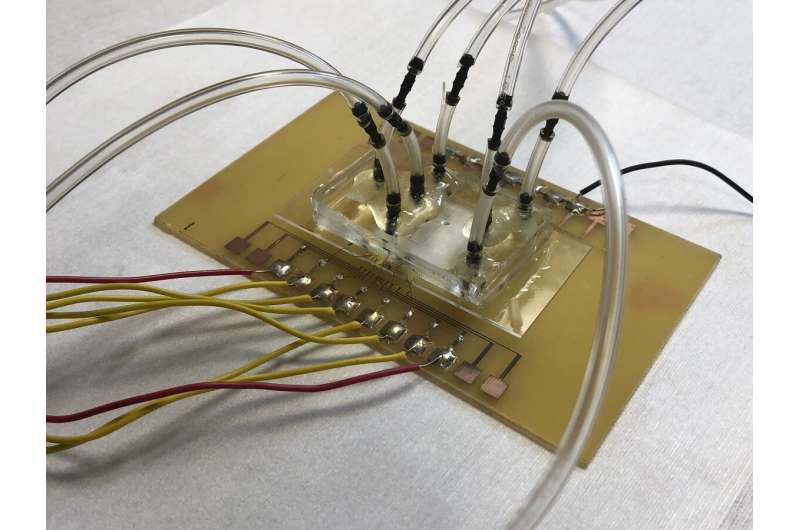Biosensor can detect a small presence of salmonella in food in just hours

When food is recalled due to contamination from bacteria such as salmonella, one may wonder how a tainted product ended up on store shelves. New technology being developed at the University of Missouri could give retailers and regulators an earlier warning on dangers in food, improving public health and giving consumers peace of mind.
The biosensor provides a rapid way for producers to know if this invisible danger is present in both raw and ready-to-eat food before it reaches the store. Annually, more than 48 million people get sick from foodborne illnesses in America, such as salmonella, according to the Centers for Disease Control and Prevention.
"Current tests used to determine positive cases of salmonella—for instance culturing samples and extracting DNA to detect pathogens—are accurate but may take anywhere from one to five days to produce results," said Mahmoud Almasri, associate professor of electrical engineering and computer science at the MU College of Engineering. "With this new device, we can produce results in just a few hours."
In this study, researchers focused on poultry products, such as chicken and turkey. The biosensor uses a specific fluid that is mixed with the food to detect the presence of bacteria, such as salmonella, along a food production line in both raw and ready-to-eat food. That way, producers can know within a few hours—typically the length of a worker's shift—if their products are safe to send out for sale to consumers. The researchers believe their device will enhance a food production plant's operational efficiency and decrease cost.
"Raw and processed food could potentially contain various levels of bacteria," said Shuping Zhang, professor and director of the Veterinary Medical Diagnostic Laboratory at the MU College of Veterinary Medicine. "Our device will help control and verify that food products are safe for consumers to eat and hopefully decrease the amount of food recalls that happen."
Researchers said the next step would be testing the biosensor in a commercial setting. Almasri said he believes people in the food processing industry would welcome this device to help make food safer.
The study, "A microfluidic based biosensor for rapid detection of Salmonella in food products," was published in PLOS ONE.
More information: Jiayu Liu et al. A microfluidic based biosensor for rapid detection of Salmonella in food products, PLOS ONE (2019). DOI: 10.1371/journal.pone.0216873
Journal information: PLoS ONE
Provided by University of Missouri





















